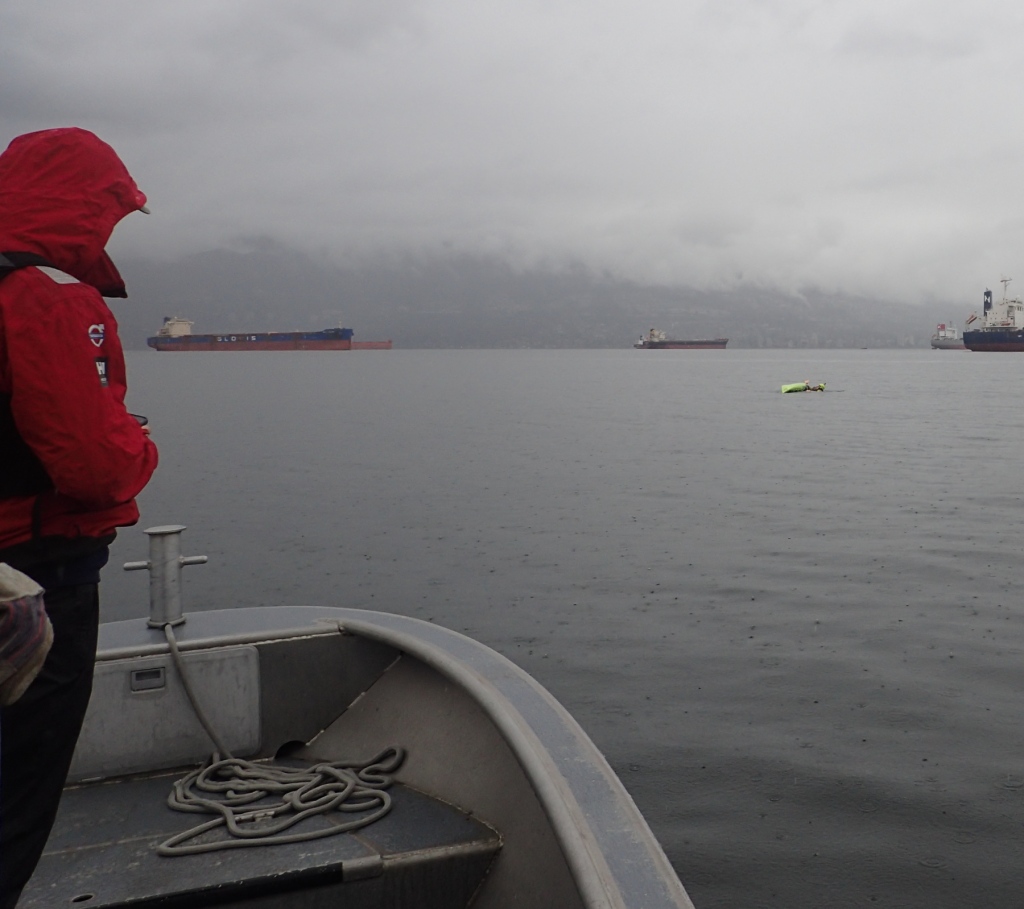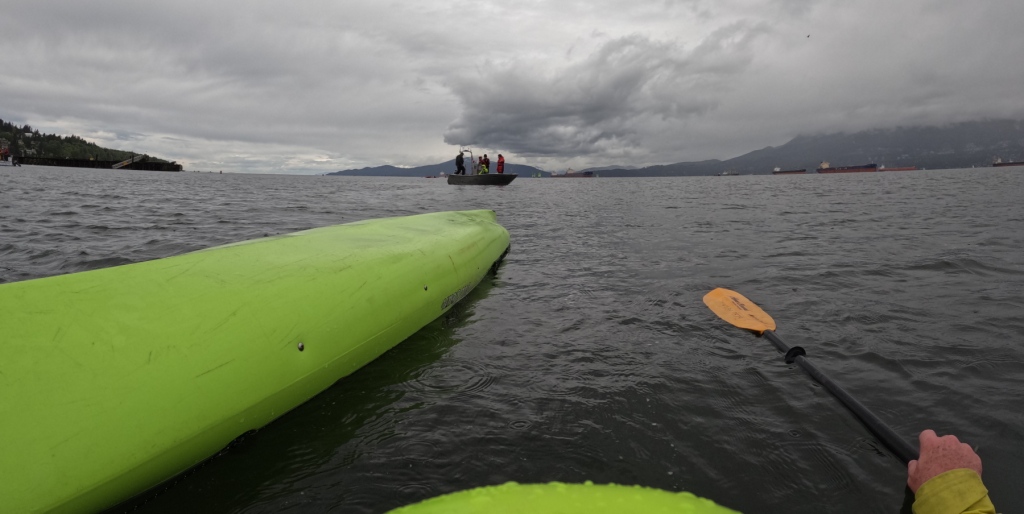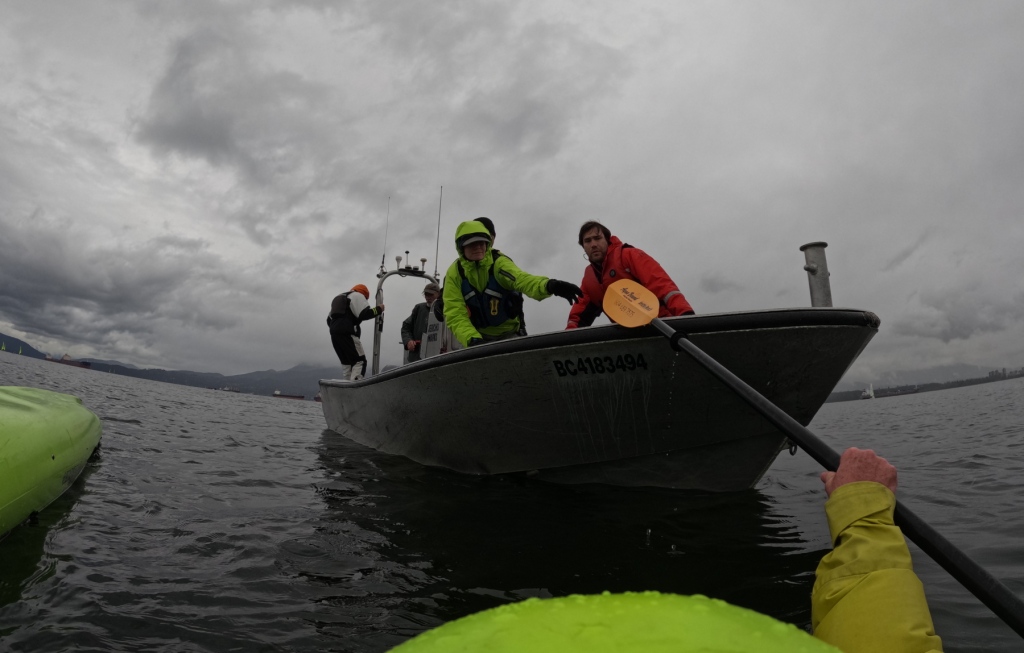I’ve been kayaking out of the Jericho Sailing Centre for decades and guiding and instructing there for years. So when the good folks at the Jericho Rescue Team asked for a “splash test dummy” to help train their latest batch of volunteers on how to rescue capsized kayakers, I was all in!

The Sailing Centre is home to many clubs and businesses that put hundreds of small craft out to sea every year. Inevitably, some of those mariners are going to get into difficulties. Each season, the Rescue Team helps with some full-on emergencies and intervenes early to keep dozens of situations from escalating into emergencies.

Actually fishing a kayaker and a kayak out of the water was a good learning opportunity for the volunteers, who deal with many different types of small craft, each with its own quirks. (Pro tip: a kayak drains better if you lift it out of the water bow first rather than stern first!) In addition, each trainee got the opportunity to steer the boat to the swimmer, and to kill the engine before pulling the victim to the stern and the reboarding ladder. (Thankfully for me, no-one forgot that last step!)

The late April Sunday was cloudy and the water surprisingly cold. But I had my trusty drysuit. Or not. As I discovered during my first capsize, I hadn’t quite sealed the zipper tab all the way, so the icy sea found its way in at about crotch level. Oh well, this added a bit of verisimilitude to the rescue scenarios! Plus I got to entertain the folks on the rescue boat with my down-on-all-fours, leg-cocked-up-like-a-dog-at-a-fire-hydrant pose as I drained water out of the drysuit zipper.



Despite draining and resealing my suit, my insulation layers were pretty moist. So I was chilled to the point of shivering by the time we’d finished the morning’s swims. I took advantage of the lunch break to rewarm in the showers at JSA, and to borrow a wetsuit from my employers at JBK, which I layered under my still-damp drysuit in a kind of “belt-and-suspenders” redundancy.







Once I was done with the afternoon plunges, the team deposited me on shore, where I lost no time taking a more prolonged warming shower, followed by a great meal at The Galley, courtesy of the Team. It was great to have helped them learn, while getting a better understanding of how they work.


